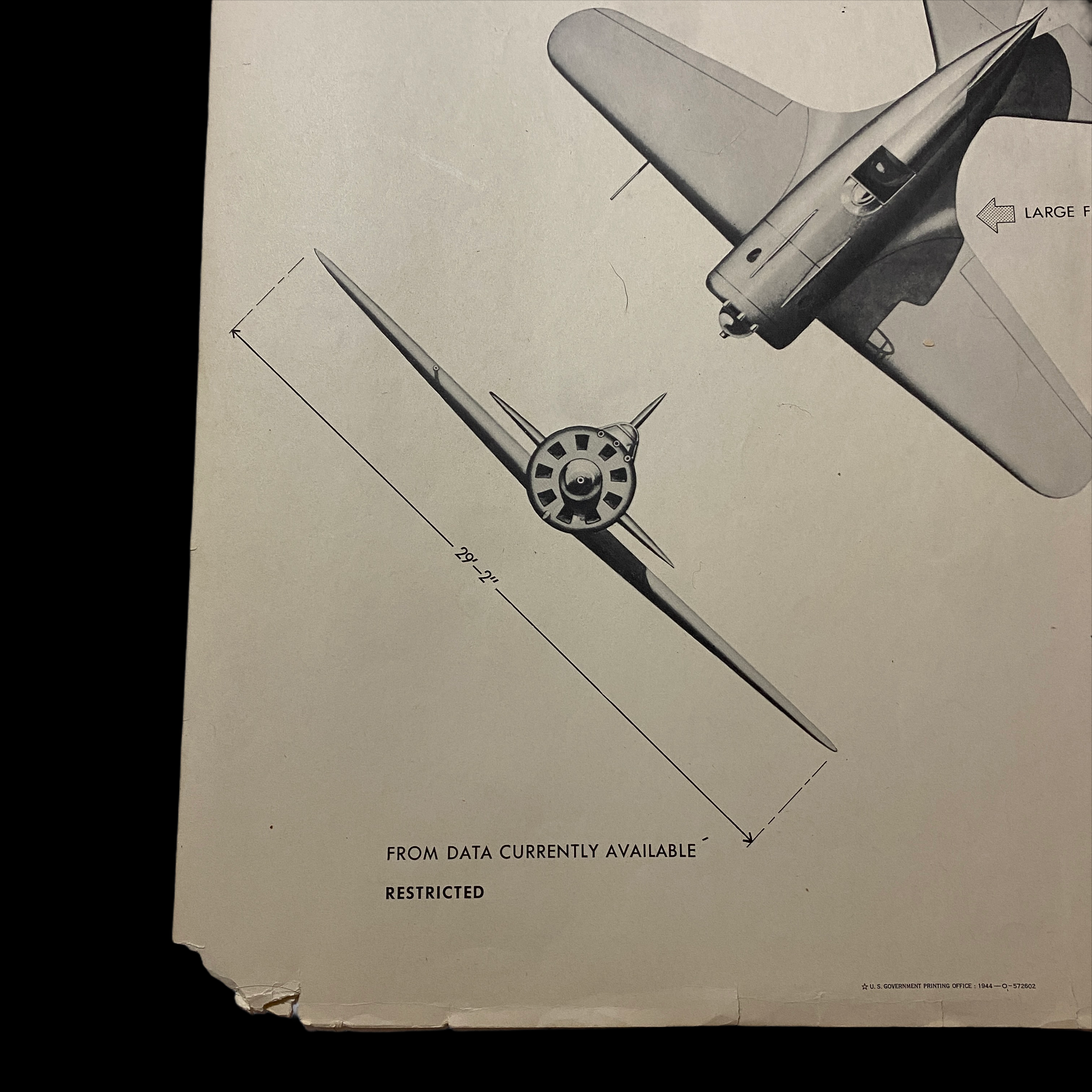WWII 1944 Soviet USSR Fighter "1-16C" W.E.F.T.U.P. ID Poster






WWII 1944 Soviet USSR Fighter "1-16C" W.E.F.T.U.P. ID Poster
Size: 19 x 25 inches
This original ‘RESTRICTED’ aircraft identification poster was published by the U.S. Naval Aviation Training Division Feb 1944. This poster was posted as a training tool as well as an in theater ID poster to help U.S. and other Allied pilots, bomber crews and Naval personal to identify Allied and enemy aircraft. W.E.F.T.U.P. or Wing, Engine, Fuselage, Tail, Undercarriage, Peculiarities was a system set up for the purpose of aircraft identification and recognition.
World War II saw some of the first introduction of these aircraft ID poster to prevent friendly fire and more accurate plane recognition in combat. It was believed these posters alone could save countless lives from friendly aircraft-on-aircraft or friendly anit-aircraft fire. These posters also could cut down precious second pilots, bomber gunners, and naval gun crews would have to ID a plane flying towards them intern saving their lives by shooting first.
Each poster provides the silhouettes, dimensions, and relevant information to educate both air and ground personnel in aircraft identification. Immediate identification of aircraft, friendly or not, was essential in order for the observer (whether in the air e.g., pilot, gunner, or patrol observer, or on the ground, e.g., anti-aircraft crew) to determine his next course of action (e.g., acknowledge, attack, evade, or report). Each poster details a large clean sky and background image of the specified aircraft located as the main top imagine on the poster. It also contains important ‘peculiarities’ such as where certain gun emplacements are located, other special aircraft features, as well as wing and length measurements.
The Polikarpov I-16 (Russian: Поликарпов И-16) is a Soviet single-engine single-seat fighter aircraft of revolutionary design; it was the world's first low-wing cantilever monoplane fighter with retractable landing gear to attain operational status and as such "introduced a new vogue in fighter design."[2] The I-16 was introduced in the mid-1930s and formed the backbone of the Soviet Air Force at the beginning of World War II. The diminutive fighter, nicknamed "Ishak" or "Ishachok" ("donkey" or "burro") by Soviet pilots, figured prominently in the Second Sino-Japanese War,[3] the Battle of Khalkhin Gol,[3] Winter War and the Spanish Civil War[4][5] – where it was called the Rata ("rat") by the Nationalists or Mosca ("fly") by the Republicans. Its main opponent in the sky in 1941 was the German Messerschmitt Bf 109.[26] The I-16 was slightly more maneuverable than the early Bf 109s and could fight the Messerschmitt Bf 109E, or Emil, on equal terms in turns. Skilled Soviet pilots took advantage of the Polikarpov's superior horizontal maneuverability and liked it enough to resist the switch to more modern fighters. The German aircraft, however, outclassed its Soviet opponent in service ceiling, rate of climb, acceleration and, crucially, in horizontal and diving speed, due to better aerodynamics and a more powerful engine. The main versions of the I-16 had a maximum speed of 450–470 km/h (279–291 mph), while the Bf 109E had a maximum speed of 560–570 km/h (347–353 mph), the more streamlined Bf 109F Friedrich could hit 615–630 km/h (372-390plus mph). So German pilots held the initiative and could decide if they wanted to chase their opponents, could attack them from above and behind and then gain altitude for a new attack. Meanwhile, Polikarpovs could only defend each other by forming a defensive circle or via horizontal maneuverability.